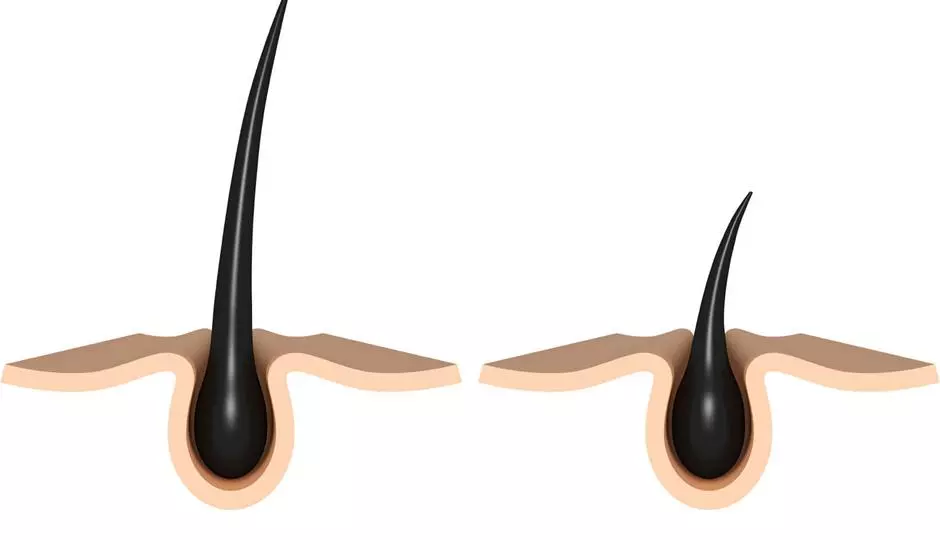Our scalp contains about 100,000 to 150,000 hair follicles. Once these are formed in our development, they undergo a lifelong cycling characterized by periods of growth (anagen phase), transformation (catagen phase), and rest (telogen phase). Unlike man’s best friend, human hair cycling is not synchronous, meaning that individual follicles cycle independently, and thus we do not have mass shedding of hair.
Anagen Phase
The anagen phase has its own unique characteristics. At any one time, approximately 90 percent of scalp hair follicles are in the anagen phase. On the scalp, the rate of hair growth is approximately .3mm per day, or about .5 inches per month.
The duration of the anagen ranges from two to six years. Obviously, someone who has a very long anagen phase is able to grow their hair much longer than a person with a shorter anagen phase. In contrast, eyebrow hair grows only at a rate of .1mm per day and has an anagen phase of two to three months. This abbreviated anagen phase accounts for the relatively short maximum length of eyebrow hair.
Similarly, a short anagen phase is responsible for the short maximum length of vellus hairs, which is typically less than 20 mm. Some of our medical treatments are designed to lengthen the anagen phase of growth.
Catagen Phase
At the end of the anagen phase the hair follicle goes into a transformation, or catagen, phase. This usually lasts around three weeks during which time the hair follicle regresses and hair production ceases. Less than 1 percent of the hair follicles on the scalp are in the catagen phase.
Telogen Phase
Following the catagen phase, the telogen phase begins, which is the resting phase. This phase will last 2-3 months. Normally about 10 percent of the scalp follicles are in the telogen phase at any one time. During this phase the hair follicle characteristics change into a fully keratinized hair with a club-shaped proximal end that is ready for shedding. We will normally shed 50-150 hairs each day.
Because each hair follicle has its own stem cells, following the telogen phase, the cycle begins again with the anagen phase and the production of a new hair. If the telogen phase is prolonged, as can happen with telogen effluvium, this can result in a reduction in hair density due to a failure of the follicles to reenter anagen following shedding.
Obviously, it is important to have a thorough understanding of hair biology and hair growth cycle to understand various etiologies of hair loss. Contact Dr. Gray today for your consultation to begin the process of achieving a full head of hair.






